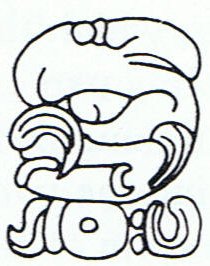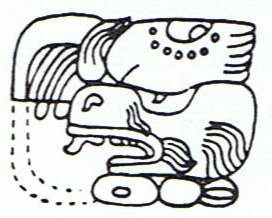|
TRANSLATIONS
Life evolved in water, and only after a long time did earth become populated. First by insects and later by mud crawling fishes. Every year the cycle repeats the old pattern. Winter is like being immersed in water. ... The brothers of Maui sat trembling in the middle of the canoe, fearing for their lives. For now the water was frothing and heaving, and great hot bubbles were coming up, and steam, and Maui was chanting the incantation called Hiki, which makes heavy weights light. At length there appeared beside them the gable and thatched roof of the house of Tonganui, and not only the house, but a huge piece of the land attached to it. The brothers wailed, and beat their heads, as they saw that Maui had fished up land, Te Ika a Maui, the fish of Maui. And there were houses on it, and fires burning, and people going about their daily tasks ... Fishes thrive in water, birds in the air and the rest in between. When a xoc fish appears in the month of the bat (Zotz) - i.e. the month of the Entrail Snatcher (Mercury) - it ought to represent a turbulent (mixed) month and the season who should should leave is winter. Well, now. A fish 'with a very long nose' is found in Easter Island mythology. ... The dream soul went on and came to Tama. She named the place 'Tama', an evil fish (he ika kino) with a very long nose (he ihu roroa) ... A good description of Zotz, I think:
The location in time is right, when winter leaves and sun returns:
The first birds to lift from land must have been poor creatures, no better flyers than bats. The xoc fishes ought to be like the poor first crawlers on land: Amazingly, xoc fishes are sharks! And according to Polynesian lore the chiefs are like sharks that walk on land! ... Here, in a very condensed form, is a typical Fijian myth of the origin of the current ruling clan (mataqali): A handsome, fair-skinned stranger, victim of an accident at sea, is befriended by a shark who carries him ashore on the south coast of Viti Levu. The stranger wanders into the interior where he is taken in by a local chieftain, whose daughter he eventually marries. From this union springs the line of Noikoro ruling chiefs, the narrator of the story being the tenth descendant on that line. He and his clansmen are called 'The Sharks' (Na Qio)... It is all as in the Hawaiian proverb: 'A chief is a shark that travels on land'... Somewhere I have read, I now seem to remember, that the English word 'shark' is derived from xoc. "Thus I believe that Thompson's brilliant decipherment of xoc 'shark' for xoc 'count', which I fully accept, was overextended in the attempt to apply it to T511, which I think should be read simply as mul(u) ..." To count the year beginning when sun reappears may be the reason for Zotz (Xoc) meaning both shark, bat and count. The limit is determined by the Pleiades, I guess. From the latitudes of South America (as on Easter Island) the map below must be imagined turned upside down, with the 'fishes' in the lower region:
... From left to right: Hercules ('the pacu fish') and Bo÷tes ('the piranha fish') enclosing Corona Australis ('the armadillo'); at the bottom on the left, Scorpio ('the big snake'), followed on the right by Corvus ('the flying heron'); then Leo ('the crab', then Gemini, Canis Major with Columba below, and moving up along the length of the Milky Way again, Orion and Eridanus ('the dance axe'). For the Indians this group (minus Eridanus) consists of the five otters busy stealing the fish placed on a barbecue (Columba), by a fisherman armed with a net (stretched between Rigel, Betelgeuse, and three stars of the constellation Orion). Above and to the right, the Hyades and Pleiades ('the small boys', 'the swarm of wasps'); on the extreme right, Cetus ('the jaguar') ... |
||||||||||||||||||||||||||||||||||||||||||||||||||||||||||||




